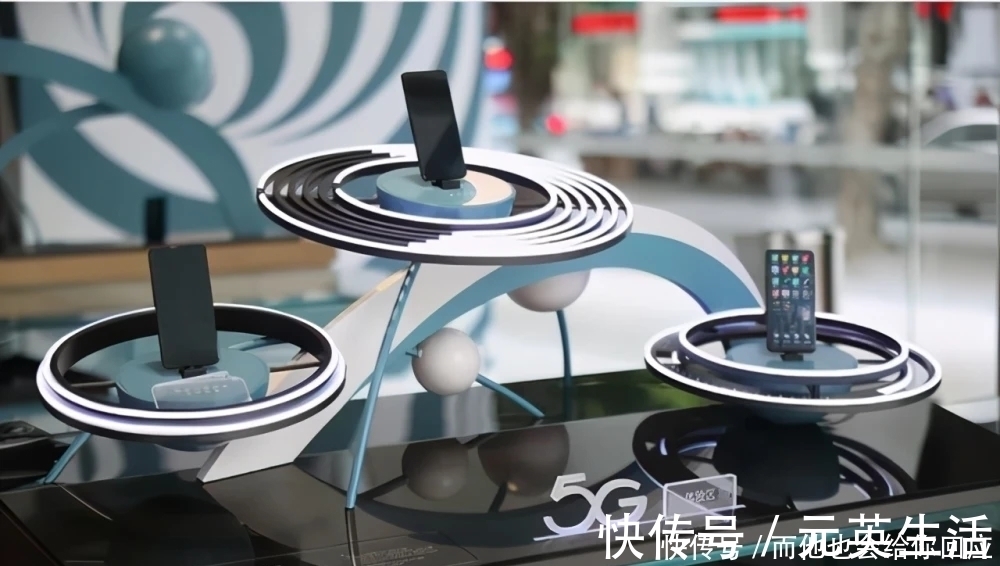еӨ§йЈһеёҰдҪ ж·ұе…ҘзҗҶи§ЈTomcatпјҲе…ӯпјү
дҪңиҖ…пјҡеҸ©дёҒзӢјж•ҷиӮІзҺӢдёҖйЈһпјҢй«ҳзә§и®ІеёҲгҖӮиҪ¬иҪҪиҜ·жіЁжҳҺеҮәеӨ„гҖӮжҺҘдёҠзҜҮпјҢд»Јз Ғе·Із»ҸиғҪеӨ„зҗҶз®ҖеҚ•зҡ„иҜ·жұӮпјҢдҪҶиө°иҜ»дёҖдёӢд»Јз ҒпјҢдјҡеҸ‘зҺ°иҝҷдәӣд»Јз ҒйқһеёёзІ—зіҷпјҢеҸҜж”№еҠЁзҡ„ең°ж–№йқһеёёеӨҡпјҢжң¬зҜҮе…ҲеҜ№HttpServletиҝӣиЎҢдјҳеҢ–
дёҠдёҠзҜҮдёӯHttpServerзұ»жӢ…еҪ“2дёӘиҙЈд»»пјҢ
1пјҡиҙҹиҙЈжҺҘ收客жҲ·з«ҜеҸ‘иө·зҡ„иҜ·жұӮ
2пјҡи§Јжһҗ并е“Қеә”иҜ·жұӮгҖӮ
жҢүз…§еҚ•дёҖзұ»и®ҫи®ЎеҺҹеҲҷеә”иҜҘз»ҷдәҲжӢҶеҲҶпјҢеҸӮиҖғtomcatжәҗз ҒпјҢHttpServerзұ»еҸҜд»ҘеҲҶдёәHttpConnectorзұ»е’ҢHttpProcessorзұ»пјҢеүҚиҖ…д»…иҙҹиҙЈжҺҘ收еҗ„зұ»иҜ·жұӮпјҢеҗҺиҖ…и§Јжһҗ并е“Қеә”иҜ·жұӮгҖӮеҗҢж—¶ж·»еҠ дёҖдёӘеҗҜеҠЁзұ»Boostrap
ж–°еўһзұ»пјҡHttpConnector
/**
* иҙҹиҙЈзӣ‘еҗ¬з«ҜеҸЈпјҢжҺҘ收иҜ·жұӮдҝЎжҒҜпјҢеҺҹе…ҲHttpServerзұ»жӢҶеҲҶиҖҢжҲҗ
*/
public class HttpConnector implements Runnable {// еҒңжӯўи®°еҸ·
private boolean stopped;
// еӨ„зҗҶ
private String scheme = "http";
public String getScheme() {
return scheme;
}public void run() {
ServerSocket serverSocket = null;
try {
serverSocket = new ServerSocket(8080, 1, InetAddress.getByName("127.0.0.1"));
} catch (IOException e) {
e.printStackTrace();
System.exit(1);
}while (!stopped) {
Socket socket = null;
try {socket = serverSocket.accept();
} catch (Exception e) {
continue;
}
//еӨ„зҗҶиҜ·жұӮ
HttpProcessor processor = new HttpProcessor(this);
processor.process(socket);
}
}
public void start() {
Thread thread = new Thread(this);
thread.start();
}
}
иҜҙжҳҺпјҡзұ»е®һзҺ°дәҶrunableжҺҘеҸЈпјҢ е…¶зӣ®зҡ„йқһеёёз®ҖеҚ•пјҢеҗҺз»ӯеҜ№йЎ№зӣ®еҚҮзә§ж—¶дҪҝз”ЁпјҢ жҜ”еҰӮ并еҸ‘иҜ·жұӮж—¶пјҢдҪҝз”ЁзәҝзЁӢзҡ„ж–№ејҸеӨ„зҗҶгҖӮ
ж–°еўһзұ»пјҡHttpProcessor
/**
* иҙҹиҙЈи§ЈжһҗиҜ·жұӮдҝЎжҒҜпјҢи°ғз”ЁStaticResouceProcessorи·ҹServletProcessorеӨ„зҗҶе“Қеә” пјҢеҺҹе…ҲHttpServerзұ»жӢҶеҲҶиҖҢжҲҗ
*/public class HttpProcessor {private HttpConnector connector;
private HttpRequest request;
private HttpResponse response;
private HttpRequestLine requestLine = new HttpRequestLine();
public HttpProcessor(HttpConnector connector) {
this.connector = connector;
}// е“Қеә”иҜ·жұӮ
public void process(Socket socket) {SocketInputStream input = null;
OutputStream output = null;
try {
input = new SocketInputStream(socket.getInputStream(), 2048);
output = socket.getOutputStream();
request = new HttpRequest(input);
response = new HttpResponse(output);
response.setRequest(request);
response.setHeader("Server", "Pyrmont Servlet Container");
parseRequest(input, output);
parseHeaders(input);
// е“Қеә”иҜ·жұӮsocket.close();
} catch (Exception e) {
e.printStackTrace();
}
}
private void parseRequest(SocketInputStream input)throws IOException {
//иҜ»еҸ–иҜ·жұӮж•°жҚ®пјҢе°ҒиЈ…жҲҗreauestLineеҜ№иұЎ
input.readRequestLine(requestLine);
String method =
new String(requestLine.method, 0, requestLine.methodEnd);
String protocol = new String(requestLine.protocol, 0, requestLine.protocolEnd);
if (method.length() < 1 || requestLine.uriEnd < 1) {
throw new RuntimeException("и§ЈжһҗиҜ·жұӮеҮәй”ҷ");
}
request.setMethod(method);
request.setProtocol(protocol);
//еҜ№uriиҝӣиЎҢжӢҶеҲҶпјҢеҲҶuri + жҹҘиҜўеҸӮж•°
String uri = null;
int question = requestLine.indexOf("?");
if (question >= 0) {
request.setQueryString(new String(requestLine.uri, question + 1,
requestLine.uriEnd - question - 1));
uri = new String(requestLine.uri, 0, question);
}
else {
request.setQueryString(null);
uri = new String(requestLine.uri, 0, requestLine.uriEnd);
}request.setRequestURI(uri);
System.out.println("method:" + request.getMethod());
System.out.println("protocol:" + request.getProtocol());
System.out.println("uri:" + request.getRequestURI());
System.out.println("queryString:" + request.getQueryString());
}/**
* и§ЈжһҗиҜ·жұӮеӨҙдҝЎжҒҜ
*
* @param input
*/
private void parseHeaders(SocketInputStream input) throws IOException {
while (true) {
HttpHeader header = new HttpHeader();
input.readHeader(header);
if (header.nameEnd == 0) {
if (header.valueEnd == 0) {
return;
} else {
throw new RuntimeException("и§ЈжһҗиҜ·жұӮеӨҙжҠҘй”ҷ");
}
}String name = new String(header.name, 0, header.nameEnd);
String value = https://www.it610.com/article/new String(header.value, 0, header.valueEnd);
request.addHeader(name, value);
if (name.equals("content-length")) {
int n = -1;
try {
n = Integer.parseInt(value);
} catch (Exception e) {
throw new RuntimeException("и§ЈжһҗиҜ·жұӮеӨҙжҠҘй”ҷ");
}
request.setContentLength(n);
} else if (name.equals("content-type")) {
request.setContentType(value);
}
}
}
}
гҖҗеӨ§йЈһеёҰдҪ ж·ұе…ҘзҗҶи§ЈTomcatпјҲе…ӯпјүгҖ‘ж–°еўһзұ»пјҡBoostrap
з”ЁдәҺеҗҜеҠЁtomcat
public final class Bootstrap {
public static void main(String[] args) {
// жңҚеҠЎеҷЁеҗҜеҠЁ
HttpConnector connector = new HttpConnector();
connector.start();
}
}

ж–Үз« еӣҫзүҮ
WechatIMG9.jpeg
жҺЁиҚҗйҳ…иҜ»
- ж·ұе…ҘзҗҶи§ЈGoд№Ӣgenerate
- гҖҗ1057еҝ«жҠҘгҖ‘ж·ұе…Ҙжңәе…іпјҢиө°дёӢз”°й—ҙпјҢдәӨйҖҡжҷ®жі•пјҢе…ұеҲӣж–ҮжҳҺ
- дёҚеәҹиҜқпјҢд»Јз Ғе®һи·өеёҰдҪ жҺҢжҸЎ|дёҚеәҹиҜқпјҢд»Јз Ғе®һи·өеёҰдҪ жҺҢжҸЎ ејәзј“еӯҳгҖҒеҚҸе•Ҷзј“еӯҳпјҒ
- з”ҹеҸ‘зҹҘиҜҶпјҢеёҰдҪ ж·ұе…ҘдәҶи§Ј
- ж·ұе…ҘзҗҶи§Ј|ж·ұе…ҘзҗҶи§Ј Android 9.0 Crash жңәеҲ¶пјҲдәҢпјү
- ж·ұе…Ҙжө…еҮәи°ҲдёҖдёӢжңүе…іеҲҶеёғејҸж¶ҲжҒҜжҠҖжңҜпјҲKafkaпјү
- еёҰдҪ дәҶи§Јзұ»еһӢзі»з»ҹд»ҘеҸҠflowе’Ңtypescriptзҡ„еҹәжң¬дҪҝз”Ё
- еёҰдҪ жқҘзңӢиҠұ
- 5|5 дёӘ PPT еёёз”Ёеҝ«жҚ·й”®еёҰдҪ д»ҺжӯӨиө°еҗ‘й«ҳж•Ҳ
- mysql|дёҖж–Үж·ұе…ҘзҗҶи§Јmysql










